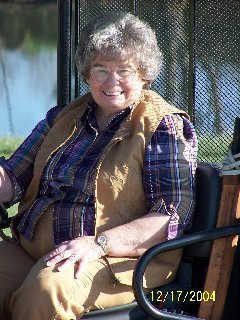Gerald reported at lunch the other day on the beauty of the
wild flowers in our Conservation Reserve Program (CRP) acres. He wanted to send a bouquet of these to
daughter Katherine, so he invited me to take a tour with him that afternoon to
collect flowers.
We climbed into the Gator and started off first to check out
the little sunflower plants in several plots around the farm. The deer have destroyed one plot and are
working on another, but Gerald has sprayed four plots with deer repellent that
is supposed to keep the deer away. We
will see in another month whether we get to enjoy blossoms on these plots. If we do, the birds will have quite a feast later
when the seeds drop from the bloom center. Although we saw no deer on this
particular day, we did see one circle of smashed grass where they had slept.
Gerald has planted all kinds of hay seed and native grasses
on the CRP land surrounding our home—timothy, lespedeza, red top, alfalfa.
Although there is some work for the farmer involved with this government
program requiring planting, mowing, and sometimes careful burning, it is
pleasant to think of the earth growing richer for future generations and bird
life more abundant for us. Little blue
stem is particularly appealing to Gerald because unlike a dense ground
cover such as fescue, this native grass
has bare spots between the plants, and the quail have room to nest and run
through these little alley ways.
Soon we were over beyond our lake and were riding through lush
tall grasses and abundant patches of flowers--brown-eyed Susans, Queen Anne’s
lace, red and ladino clover, and plants I did not know the name of. Gerald would grab his machete and hop off and
cut tall stems to put into our large box in the back of the Gator. I have heard of sweet clover all my life, but
somehow I thought that was just a generic name for the red and white. Now I have learned that the very tall plants
with lacy leaves and little yellow blossoms are what that term refers to. The
lacy leaves on the stems of partridge pea were as pretty as blossoms to me. All these
were added to the box along with some pretty heads of milkweed, which of course
oozed its milky substance when Gerald cut the stems.
Although we occasionally saw the quite lovely lavender bloom
of thistle plant, we didn’t collect them when Gerald chopped the thorny things
down. I was reminded of my dad paying my
older siblings so much for every one of the thistles they cut from his
pasture. I think I tagged along with
Rosie and Jim but was too young to make any money.
Gerald remembered being paid for collecting pods from the milkweed
plant for the war effort during World War II.
The silky seeds inside were used for life jackets.
Infrequently we saw the brown head of the weed called sour dock,
and I remembered using those seeds for coffee in the play house I created in
two of the angles of the rail fence still remaining at Mount Airy Farm from my
father’s childhood. I loved my mother’s stories about her and her friend Vera’s
adventures, and so I tried to imitate their rail fence play house. (One angle provided a living room area, and
the next angle allowed me to have a kitchen.
I carried in a wooden box for a table and other objects for
furniture.) Gerald clipped me one stalk
of dock in honor of that childhood
memory, and it looked rather nice in the middle of the arrangement I put on our
dining room table, where it matched the brown cloth beneath it.
I am sure part of the reason for this ride around the farm
was to distract me from the sadness of our daughter’s illness, and temporarily
it did. Our box was full and running over, so I had plenty of flowers for a
huge bouquet from Gerald to Katherine, which was especially pretty when he
added a few tiger lilies and orange butterfly weed. There was a bouquet for us, a couple of
blooms for the kitchen table, and a huge arrangement in a bucket for the front
porch. Best of all was the memories stirred up and the memories created of
fields full of golden yellow blossoms swaying midst an abundance of tall warm
season grasses.
The Farm
Service Agency (FSA) website which administers the
Conservation Reserve Program (CRP) for the federal Department of
Agriculture gives this explanation: “In exchange for a yearly rental payment,
farmers enrolled in the program agree to remove environmentally sensitive land
from agricultural production and plant species that will improve environmental
health and quality. Contracts for land enrolled in CRP are 10-15 years in
length. The long-term goal of the program is to re-establish valuable land
cover to help improve water quality, prevent soil erosion, and reduce loss of
wildlife habitat.”












No comments:
Post a Comment